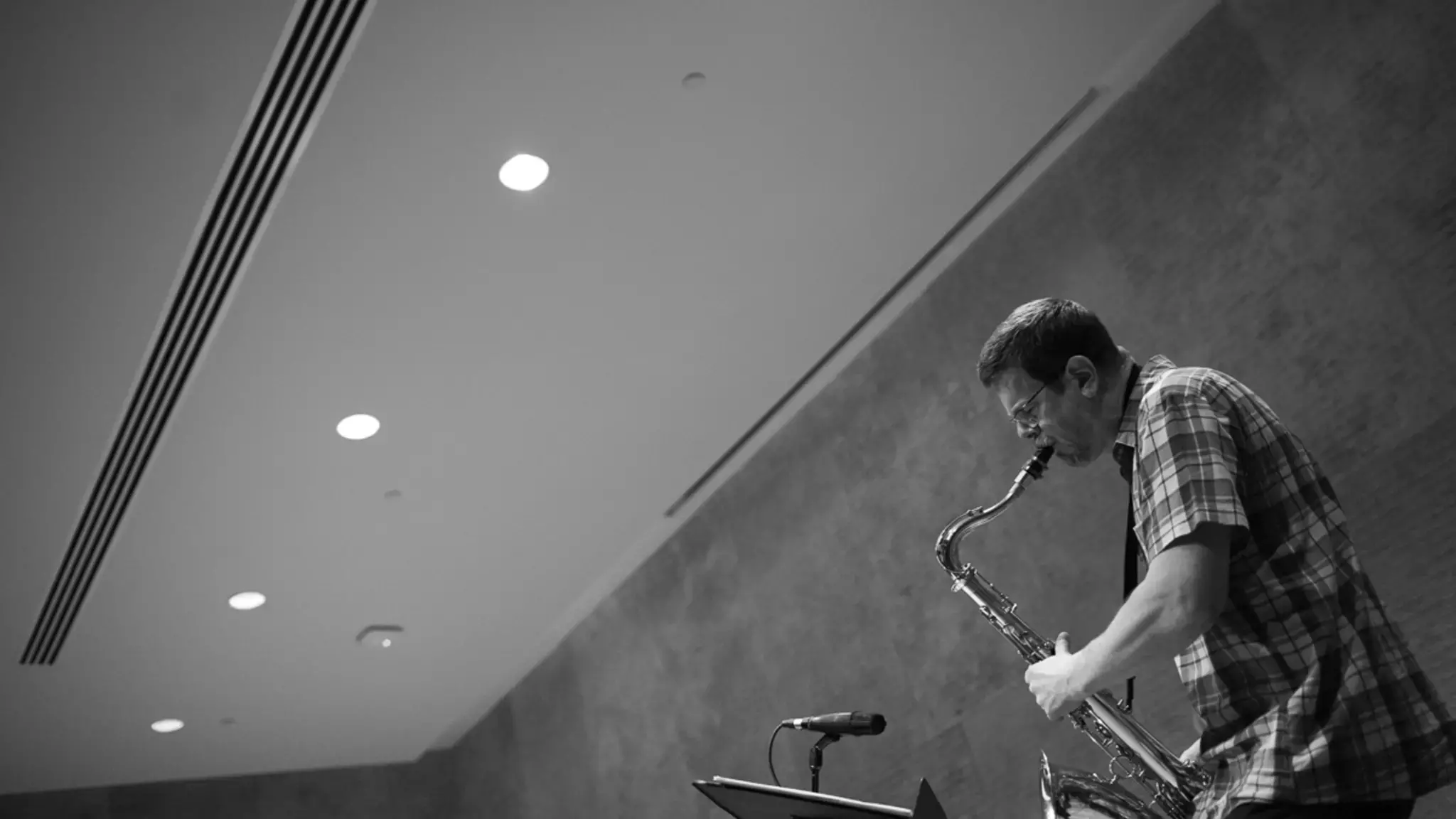

For our ongoing Questions of Practice series, we asked MacArthur award-winning saxophonist and composer Ken Vandermark a deceptively simple yet deliberately provocative question: Is jazz dead?
This past spring, Vandermark debuted a Center-funded commission in response to Philadelphia’s legendary Barnes Foundation, as part of Ars Nova Workshop’s New Paths Festival. Read his thoughts on that commission here.
Unfortunately, for an art form and way of making music that flourished throughout the 20th century, the idea of jazz as a living language more or less ended by the start of the 21st century. This is not because the music itself had ceased to be relevant and creative. Rather, in an attempt to make jazz an economically viable cultural force in America, certain institutions felt that it was necessary to brand and market the music as a style, as opposed to allowing it to remain an expanding art form. The attempt to do this succeeded by codifying and defining the parameters of what jazz is and isn’t, which is always problematic if artists want to work without limits, categories, and boundaries. If its history is properly examined, jazz will be understood as always being connected to a tradition of innovation, individuality, and integration, which is quite the opposite of the way this music is currently understood.
There is no successful way for improvising musicians, whose work could still be considered as part of the creative edge of jazz tradition, to challenge the contemporary preconception that jazz is merely a style; this idea is backed on an annual level by a multimillion dollar marketing and education campaign. So, rather than continuing to make the argument that creative music that is an extension of jazz history exists in the 21st century—fighting an institutional marketing campaign that costs tens of millions of dollars each year to sustain itself—it makes more sense to save time and artistic energy by saying that the music I am now making no longer has an aesthetic relationship to jazz. Because, as jazz is currently understood, it doesn’t.